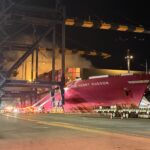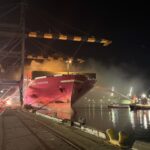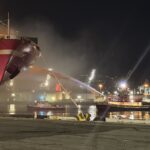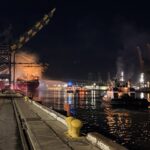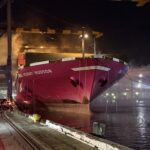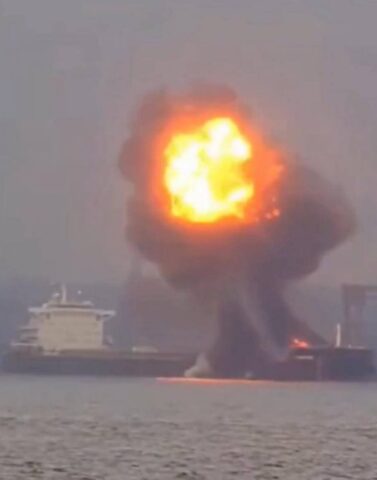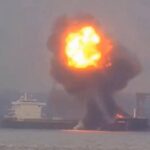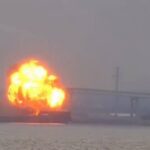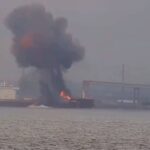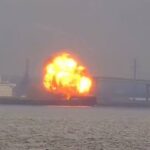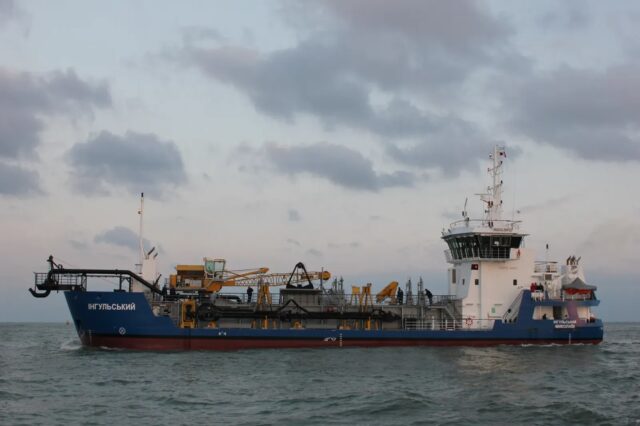One Henry Hudson

On the evening of November 21, the 336 meter long, 98849 dwt container ship One Henry Hudson (IMO: 9302176) caught fire in the Pacific Ocean at 701 East New Dock Street in San Pedro, California. An electrical fire started below deck and had spread through areas of the vessel which were inaccessible to the crew. An hour later there was an explosion mid-deck which caused a partial power blackout making the lights and onboard cranes to stop functioning.
Multiple authorities were alerted with the Los Angeles City Fire Department, United States Coast Guard, Los Angeles Port Police along with the Long Beach Fire Department and the crew on the One Henry Hudson assisting. Over 200 fire fighters along with 7 fireboats were deployed to fight the fire. Several of the vessel’s 23 crew initially assisted firefighters, but all crew members were evacuated off the vessel. As conditions on the vessel deteriorated, the fire fighters were ordered off the container ship. Fire suppression was conducted at a safe distance from shore and from fire boats.

A few hours later, authorities determined to move the One Henry Hudson from the pier to approximately 1 mile off shore near the Angel’s Gate Lighthouse. There the container ship would be at anchor while fire suppression continued and salvage teams begin efforts. There were no reports of injuries. Authorities had issues a stay at home order while the container ship was in port, but was lifted when the vessel went offshore. Reports state the fire had been contained to just one compartment by the next day. An investigation into the incident has been launched.

